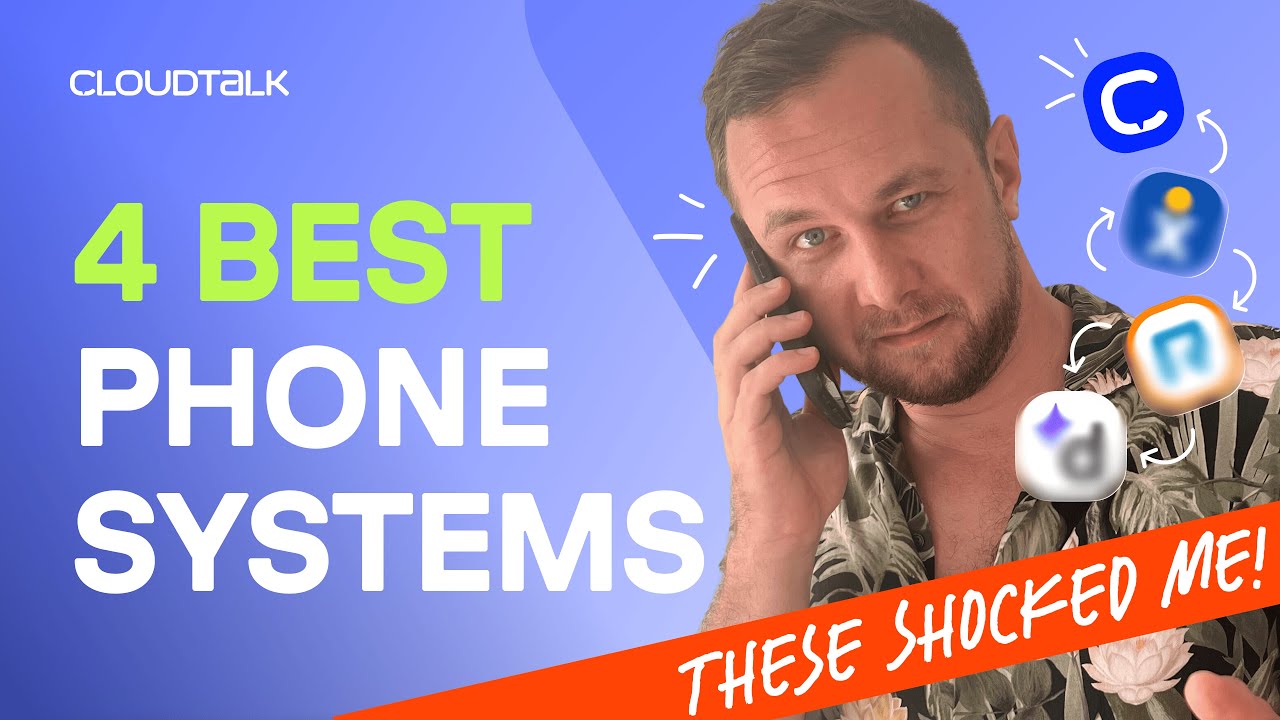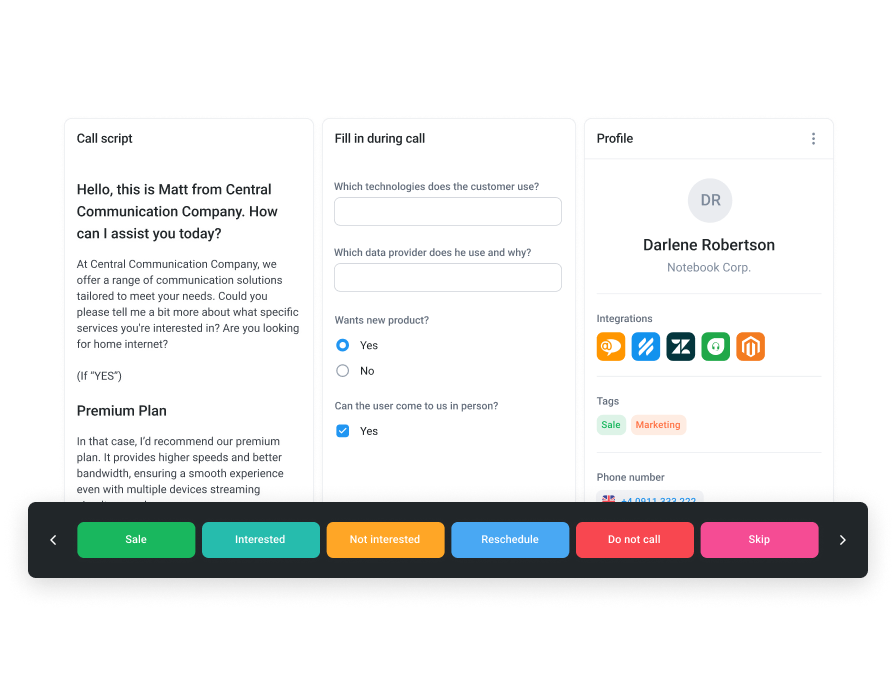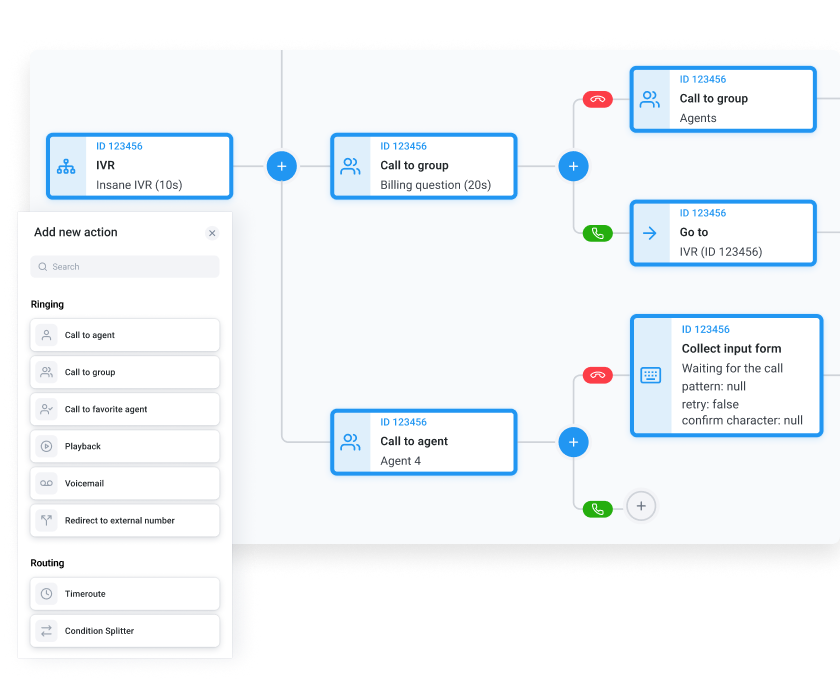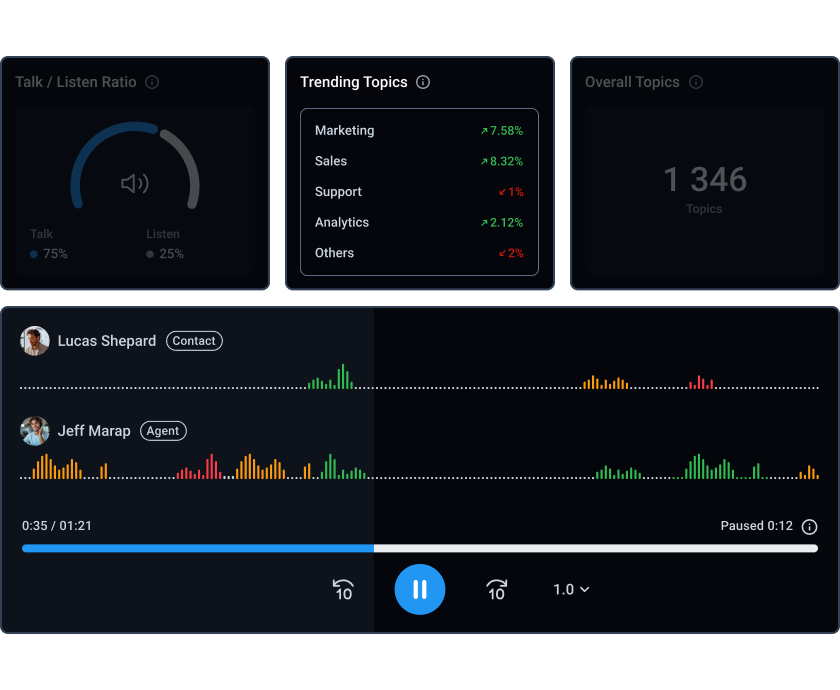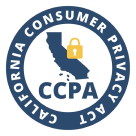When every call is a chance to win or lose trust, a phone system has to be more than a utility. It has to connect people, data, and context.
For growing teams in SaaS and services, the phone isn’t just another channel. It’s where you start driving revenue, solve issues, and make (or break) your CX.
And the stakes are high—80% of customers switch brands after poor service¹, while connected teams often see productivity boosts by 20–25%². Those gains don’t come from smarter scripts or bigger teams, but rather from tools that remove friction and connect every conversation.
That’s why many businesses turn to Zoom Phone. It’s familiar, quick to deploy, and fits neatly into the Zoom Meetings footprint. For basic calling, that’s enough. But is it really built for teams that need outbound growth, AI-driven coaching, or strict compliance?
In this Zoom Phone review, we’ll cover its features, pricing, and limitations, along with solution recipes for common blockers. And if you’re already wondering about Zoom Phone alternatives, we’ll show you how CloudTalk and other voice-first providers compare.
Key Takeaways:
-
Convenient add-on: Zoom Phone works best for teams already in Zoom Meetings, but on its own it offers fewer advantages than dedicated voice platforms.
-
Low entry price, rising costs: Plans start at $10/user, though adding dialers, analytics, or compliance features often increases the total investment.
-
Shallow integrations: Salesforce, HubSpot, and Zendesk integrations are available, but they focus on call logging rather than deeper workflow automation.
-
Outbound and coaching gaps: Dialer options and analytics are limited, making it less suited to teams with heavy outbound or coaching needs.
-
The best Zoom Phone alternatives: CloudTalk stands out for SMBs that need built-in dialers, AI Voice Agents, Conversation Intelligence, and deep CRM workflows to drive faster growth. RingCentral, Nextiva, and Dialpad also offer stronger fits for enterprises, midsize businesses, or AI-focused teams.
See Why Growing Teams Choose CloudTalk Over Zoom Phone
What Is Zoom Phone System (and How Does It Work)?
Zoom Phone is Zoom’s cloud-based phone system. Instead of using old copper lines, it runs on VoIP (Voice over Internet Protocol), which simply means calls happen over the internet.
If your team already uses Zoom Meetings or Zoom Chat, it plugs right in so you can manage calls, video, and chat from one place.
In practice, Zoom Phone works by:
-
Assigning business numbers to users
-
Routing calls to desktop or mobile apps
-
Handling basics like forwarding and voicemail
-
Running everything in the cloud without on-premise hardware
The biggest selling point is simplicity: no extra hardware in the office, just an app connected to your Zoom account.
Zoom’s best feature is its simplicity and reliability, making virtual meetings and collaboration easy for users.
The lightweight design works fine for small teams, but what happens as companies expand? If you want to grow, you’ll need power dialers, CRM-connected analytics, or strict compliance controls—features that Zoom Phone only offers through extra add-ons or not at all. Will you end up bolting on extra software, with rising costs and complexity?
These are the questions many businesses face as they scale. That’s why some turn to solutions built for growth, with CloudTalk as one of the strongest examples. Here’s how one company solved that challenge.
Get PlanRadar Results with CloudTalk—the Best Zoom Phone Alternative
Zoom Phone vs. Zoom Meetings vs. Zoom Workplace
Zoom now offers several communication products, and it’s easy to confuse them if you’re not deep into their ecosystem. Here’s how they differ:
-
Zoom Phone is Zoom’s cloud telephony service. It gives your business phone numbers, call routing, and voicemail through a VoIP system, making it better suited for everyday business calls.
-
Zoom Meetings is Zoom’s video conferencing tool. It’s what you use for team meetings, webinars, or virtual events, and it’s best if video collaboration is your main focus.
-
Zoom Workplace is the all-in-one bundle. It combines Meetings, Phone, Chat, Whiteboard, and other tools into a single subscription, which works best if you want everything managed in one suite.
For teams already living in back-to-back Zoom calls, adding Zoom Phone feels like the obvious next step. But if your business isn’t built around Zoom, the Workplace bundle quickly loses its shine.
Pro Tip: Know What You Really Need
Zoom Phone Review: An In-Depth Breakdown
Now that you know what Zoom Phone is and how it fits into Zoom’s ecosystem, let’s continue this Zoom Phone review by taking a closer look at what the system actually offers.
We’ll look into these areas:
-
01
Zoom Phone pricing
-
02
Zoom Phone features
-
03
Zoom Phone integrations
-
04
Zoom Phone limitations
-
05
Zoom Phone user experience
-
06
Zoom Phone support
These areas shape the full picture of Zoom Phone—from cost to features to what it’s like to actually use it. Let’s walk through each one, and along the way we’ll see where alternatives like CloudTalk stack up.
1. Zoom Phone Pricing: Low Entry, Rising Costs
Zoom Phone’s pricing starts at $10/license/month, which is appealing, especially for smaller teams. However, to reach VoIP calling’s full potential, you’ll have to pair specific Zoom Phone plans with a bunch of add-ons, which quickly adds to the bill.
Zoom Phone Pricing Overview
| Plan | Pricing (per license/month) | Calling Scope | Notes |
|---|---|---|---|
| Metered | $10 | Pay-per-minute calling | Cheapest entry point; only works if call volumes are very low |
| Regional Unlimited (US & Canada) | $15 | Unlimited calling within one region | Popular with small, local teams |
| Global Select | $20 | Unlimited in one chosen country; extras cost more | More flexible for distributed & remote teams |
| Add-ons | Varies | SMS, analytics, call queues, Auto Dialer | Can quickly push up total costs |
While Zoom Phone’s entry-level pricing is competitive, the total cost of ownership often tells a different story. Once you stack on essentials like analytics, compliance tools, or the Auto Dialer, the bill can easily exceed that of providers built for scale, like CloudTalk.
Don’t Get Caught by Add-Ons
2. Key Zoom Phone Features: The Essentials Covered
Zoom Phone includes the main features you’d expect from a business phone system. These cover the basics but don’t go much beyond that:
-
Call routing and forwarding: Direct calls between devices or teammates. Useful for hybrid teams moving between office, home, and mobile.
-
Call queues: Keep callers in line when all agents are busy. It reduces missed calls, though it doesn’t actively shorten wait times.
-
Auto-attendant (IVR): Simple “press 1 for Sales, press 2 for Support” menus. Helpful for small teams, but less flexible than the advanced routing logic CloudTalk offers.
-
Voicemail-to-email: Sends voice messages as audio files to your inbox. Handy if you’re on the go, but other VoIP platforms like CloudTalk add voicemail transcription to make scanning and replying faster.
-
Number porting: You can bring existing numbers to Zoom, but the process can take weeks—alternatives like CloudTalk speed things up with guided support.
-
Collaboration tie-ins: It works smoothly with Zoom Chat and Meetings if your team is already inside Zoom’s ecosystem—otherwise, the value drops.
-
Scheduling integration: Syncs with Zoom Meetings, which is useful if interviews or sales calls are already booked in Zoom.
-
Security options: Calls can be end-to-end encrypted, though admin controls are lighter than what compliance-focused providers deliver.
-
AI Receptionist (Zoom Virtual Agent): Zoom now offers a 24/7 AI concierge that greets callers and handles simple requests like booking or FAQs. It’s smarter than a standard IVR, but not as advanced as, let’s say, CloudTalk’s AI Voice Agents, which handle dynamic conversations, both inbound and outbound, with full CRM context.
Try Every CloudTalk Feature Free for 14 Days
3. Zoom Phone Integrations: Basic, but Limited in Depth
One of Zoom Phone’s selling points is that it connects with popular CRMs and other business tools. But while the integrations exist, many feel more like surface-level add-ons than deep workflow automations.
Here’s the business tools you can integrate into Zoom Phone:
-
Salesforce CRM: Logs calls, but doesn’t give you advanced analytics or AI summaries.
-
HubSpot CRM: Supports click-to-call and basic activity sync, but lacks deeper automation.
-
Zendesk: Links tickets with calls, though reporting and context sharing remain limited.
-
Slack: Sends call notifications to channels—handy, but not a replacement for true collaboration.
-
Outlook & Google Workspace: Syncs contacts and calendars, useful for scheduling and caller recognition.
-
Gmail: Routes voicemails straight to your inbox, though transcription isn’t built in.
-
Zoom Meetings: Lets you escalate calls into video meetings instantly, which is seamless for Zoom-first teams.
-
Five9: Provides a contact center tie-in, though setup and usability aren’t as straightforward as native solutions.
These integrations keep communication flowing, but they often stop short of automating repetitive work or syncing deeply with your core systems.
Integrations That Go Beyond the Basics
4. Common Limitations of Zoom Phone: Where Teams Hit Roadblocks
Let’s now take a quick look at where scaling teams relying on the Zoom Phone system often feel most friction:
-
Analytics: Reporting is limited to call logs and simple dashboards. That shows activity, but not much about performance. For example, there’s no sentiment analysis, talk ratio, or coaching insights without third-party tools.
-
Outbound calling: Zoom’s Auto Dialer add-on (released mid-2025) brings power dialing and voicemail drop, but it comes at an extra cost.
-
Integrations: While Zoom connects to Salesforce, HubSpot, and Zendesk, these links are rather shallow. You’ll get call logging, but not deep workflow syncs like auto-notes or AI summaries.
-
Compliance: Call recording access and retention options are limited. This may be enough for basic use, but teams in finance, healthcare, or other regulated industries often find it risky.
Bottom Line:
5. Zoom Phone User Experience: Familiar, but not Always Smooth
One of Zoom Phone’s strengths is its interface. If your team already uses Zoom Meetings, the layout feels natural—calls sit right next to video and chat, so switching between modes is easy.
For admins, though, the story is different. Managing numbers, licenses, and call flows often feels clunky compared to platforms designed specifically for voice. What looks simple at the surface can demand more manual setup and maintenance in the backend.
Pro Tip: Don’t Overlook the Backend
6. Customer Support Zoom Phone Offers: A Mixed Experience
Zoom Phone’s customer support reputation is somewhat mixed. While some teams say they get quick help, others highlight delays or confusion around billing and missing features.
What I am not a fan of is the response time of the support team or various issues with the billing department. We have had to contact them a few times regarding features that we are missing/paying for.
In practice, the experience often depends on company size:
-
Enterprise accounts typically get stronger SLAs (Service Level Agreements) and more attention.
-
SMBs and mid-market teams are more likely to report slower responses or unresolved billing issues.
Support Can Be a Dealbreaker
Zoom Phone Review: Pros and Cons
After looking at pricing, features, integrations, and support, the trade-offs become clear. To make them easy to scan, here’s a glance at the main pros and cons of Zoom Phone:
Zoom Phone Pros and Cons
| Pros | Cons |
|---|---|
| Convenient add-on for Zoom users | Limited CRM integrations |
| Affordable entry pricing | Weak analytics & coaching tools |
| Unified platform | Outbound features underpowered |
| Decent call quality | Compliance controls too limited |
Zoom Phone Advantages: Where It Works Well
-
Smooth add-on to Zoom Meetings: If your team already runs on Zoom Meetings, adding Phone feels seamless—no need to juggle multiple vendors.
-
Good fit for budget-conscious teams: Starting at around $10/user/month, it’s appealing for smaller companies adopting VoIP for the first time.
-
Simplifies your tech stack: Managing chat, video, and voice under one provider reduces billing headaches and tool fatigue.
-
Reliable audio quality: Day-to-day internal calls and straightforward customer conversations generally perform without issue.
Zoom Phone Disadvantages: Where It Falls Short
-
CRM connections lack depth: Salesforce, HubSpot, and Zendesk integrations exist, but they don’t deliver the workflow automation scaling teams often expect.
-
Analytics and coaching feel basic: Call logs are there, but managers miss insights like talk ratios, sentiment, or coaching prompts.
-
Outbound calling remains limited: Even with the Auto Dialer add-on, pacing and automation lag behind providers built for outbound scale.
-
Compliance tools fall short: Call recording and admin oversight don’t provide the strict governance needed in regulated industries.
Bottom Line:
CloudTalk Wins Where Zoom Phone Falls Short
Best Zoom Phone Alternatives: How It Stacks up against Other VoIP Solutions
After seeing where Zoom Phone struggles—limited outbound features, shallow CRM integrations, and rising costs—it’s natural to ask: What other business VoIP systems are out there?
Before we dive in, check out this quick video highlighting our four best business phone system picks:
But let’s walk through them here as well, because the best choice depends on your company size, use case, and growth stage.
Here’s an overview of the best Zoom Phone alternatives:
-
CloudTalk: the best Zoom Phone alternative for growing SMBs, built voice-first for sales and support teams.
-
RingCentral: an enterprise-grade UCaaS provider with global reach and strong compliance tools.
-
Nextiva: a reliable VoIP service known for excellent customer support, often chosen by midsize businesses.
-
Dialpad: an AI-powered communications platform that excels at real-time transcription and unified apps.
Want to see how they actually compare on price, ratings, and strengths? Let’s look at the side-by-side comparison table before diving into each provider in more detail.
Zoom Phone vs. Best VoIP Alternatives
| VoIP Provider | Who It’s Best For | G2 Rating | Starting Price |
|---|---|---|---|
| Zoom Phone | Zoom-centric teams needing basic calling | 4.6/5 (2,492 reviews) | $10/user/month |
| CloudTalk | SMBs scaling sales & support ops | 4.4/5 (1,483 reviews) | $19/user/month |
| RingCentral | Large/global orgs with UCaaS needs | 4.2/5 (2,696 reviews) | $30/user/month |
| Nextiva | Midsize teams needing reliability & support | 4.5/5 (3,362 reviews) | $23/user/month |
| Dialpad | Tech-forward teams valuing AI | 4.4/5 (4,374 reviews) | $15/user/month |
1. CloudTalk: The Best Zoom Phone Alternative for Growing SMBs
CloudTalk is the best Zoom Phone alternative for SMBs that aim to scale. Starting at just $19/user/month for NA & LATAM regions and $25/user/month worldwide, it’s an affordable voice-first VoIP and call center platform that gives teams the tools Zoom Phone lacks—without piling on bolt-ons.
In short, it’s the counterbalance to Zoom Phone’s biggest weaknesses. And here’s the main areas where CloudTalk outperforms Zoom Phone:
Outbound that Scales
Zoom Phone recently introduced an Auto Dialer, but it’s an add-on and fairly basic. CloudTalk builds outbound power directly in, with Power Dialer, Parallel Dialer, Voicemail Drop, re-attempt logic, call dispositions, and campaign stats. The result: reps spend more time in live conversations and less time waiting on rings or leaving repetitive voicemails.
Smarter IVR & Routing for Better CX
Instead of clunky “press 1, press 2” menus, CloudTalk offers Multi-Level IVR, Skill-Based Routing, VIP Queues, and queue announcements. Thanks to these features, your customers reach the right agent on the first try, cutting frustration and improving resolution rates, while your team avoids constant call transfers.
Compliance You Can Prove
For industries like finance or healthcare, Zoom’s lighter compliance tools aren’t enough. CloudTalk provides role-based access controls, pause/resume recording, automated deletion rules, and full audit trails. That means you can pass regulatory checks with confidence while still giving Quality Assurance teams the recordings they need.
Call recordings are easy to find, allowing users to quickly access past conversations. This feature is essential for quality assurance, training, and compliance.
Integrations That Run Deeper
Zoom connects to Salesforce, HubSpot, and Zendesk—but mostly for surface-level call logging. CloudTalk supports 35+ native integrations (Salesforce, HubSpot, Zendesk, Pipedrive, Intercom, and more), plus a whole lot more you can connect through open API.
Calls, notes, and AI summaries flow directly into your CRM or helpdesk, so there’s no double data entry and no chasing context.
CloudTalk makes my daily calling process smooth and efficient. The call quality is crystal clear, the interface is user-friendly, and the integration with my CRM helps me keep everything organized without switching tools.
AI Voice Agents That Never Sleep
Where Zoom offers only an AI receptionist, CloudTalk takes the next step further with complex (yet simple to set up) AI Voice Agents that carry on natural, two-way conversations—handling inbound and outbound calls, qualifying leads, booking meetings, or answering FAQs instantly. They reduce agent workload and ensure no call goes unanswered, even outside business hours.
CloudTalk offers a fair voice agent pricing, at just $0.25/minute, with volume discount available. But the best thing about the voice agents is that they sound surprisingly human! Just listen to these quick demos covering specific AI voice agent use cases and see if you’d like to talk to them too.

AI Voice Agents
Sales Reminder
Agent
Client
Sales / Marketing
Course Inquiry
Agent
Client
Education / EdTech
Payment Reminder
Agent
Client
Financial Services
Healthcare Intake
Agent
Client
Healthcare
Insurance Intake
Agent
Client
Insurance
T&C Acceptance
Agent
Client
Legal Services
Legal Intake
Agent
Client
Legal Services
Candidate Feedback
Agent
Client
Recruitment / HR
Applicant Pre-screen
Agent
Client
Recruitment / HR
Action Reminder
Agent
Client
SaaS / Software & Apps
Subscription Renewal
Agent
Client
SaaS / Software & Apps
CX Feedback
Agent
Client
SaaS / Software & Apps
Post-Sales Feedback
Agent
Client
SaaS / Software & Apps
Trial Signup
Qualifier
Client
SaaS / Software & Apps
AI-Powered Coaching & Insights (Conversation Intelligence Suite)
CloudTalk doesn’t just record calls—it helps your team learn from them. With the Conversation Intelligence Suite add-on at just $9/user/month, every conversation is automatically enriched with practical insights:
-
AI Smart Notes: Summaries land in your CRM instantly, so reps spend less time typing and more time selling.
-
Talk/Listen Ratio: Shows whether your reps are over-talking or letting prospects speak. Managers can spot patterns and coach balance.
-
Sentiment Analysis: Flags whether a conversation is trending positive or negative, helping managers step in before deals or support tickets go south.
-
Topics Extraction: Surfaces recurring objections, questions, or feature requests, so product and sales teams align faster.
The result: managers don’t waste hours re-listening to calls, reps onboard faster with real feedback, and leadership sees what’s really happening across hundreds of conversations—without guesswork.
And these aren’t just promises. Look at how CloudTalk’s calling insights helped improve onboarding and new agent coaching at My Mortgage Finder.
All of these features set you up for fast and efficient scaling, and they are the main reasons why for most SMBs, CloudTalk is the clear Zoom Phone alternative.
One Trial Is Worth a 1,000 Reviews
2. RingCentral: Broad UCaaS for Enterprises
RingCentral is often the go-to for enterprises. It ranks among the best UCaaS (Unified Communication as a Service) providers, delivering voice, video, messaging, contact center—and strong compliance features. But with scale comes complexity: pricing is higher than SMB-focused platforms, and setup can overwhelm smaller teams.
A quick overview of RingCentral:
-
Best for: Enterprises and global companies needing UC + compliance.
-
Starting price: $30/user/month.
-
Best features: UCaaS suite (voice + video + messaging), global reach, enterprise compliance, contact center capabilities.
-
Where it beats Zoom Phone: More advanced compliance and enterprise-grade scalability.
-
G2 reviews: Praised for reliability and reach, but SMBs report complexity.
3. Nextiva: Reliable & Support-Focused
Nextiva shines with its strong customer support and reliability. Midsize businesses that don’t want heavy IT lift often choose it because it “just works.” It’s less feature-rich for outbound teams, but its stability is a big draw.
A quick overview of Nextiva:
-
Best for: Midsize businesses needing reliability and responsive support.
-
Starting price: $23/user/month.
-
Best features: Reliable calling, easy onboarding, unified communications, strong customer support.
-
Where it beats Zoom Phone: Stronger support reputation and onboarding experience.
-
G2 reviews: Often highlighted for ease of onboarding and friendly support teams.
4. Dialpad: AI-Powered Communications
Dialpad is popular with tech-savvy teams thanks to its real-time transcription and AI recaps. Its apps unify messaging, meetings, and calling, making it appealing for those already in Google Workspace. However, outbound workflows and CRM depth don’t match the likes of CloudTalk.
-
Best for: Tech-forward teams that value AI transcription + unified comms.
-
Starting price: $15/user/month.
-
Best features: Real-time transcription, AI meeting recaps, unified messaging + voice, Google Workspace tie-ins.
-
Where it beats Zoom Phone: More advanced transcription and AI features.
-
G2 reviews: Loved for transcription accuracy; weaker in CRM-native automations.
Want Even More Options?
Final Verdict: Is Zoom Phone the Right Choice?
In this Zoom Phone review, the verdict is clear: it’s a solid option if your team already lives in Zoom Meetings, your needs are light (internal calls, basic routing), and keeping upfront costs low is the main goal. And with plans starting at just $10/user/month, it’s an attractive solution for small teams.
But if you need outbound at scale, deeper analytics, AI-powered coaching, automation, or strict compliance, that’s when Zoom Phone starts falling short. Add-ons drive up costs, integrations are shallow, and insights remain limited.
For SaaS, service teams, and scaling organizations—especially IT, CX, and RevOps leaders who need more than the basics—CloudTalk’s VoIP platform is the natural (and best) alternative. It comes voice-first, with the advanced tools Zoom Phone lacks, and a future-proof stack built for growth.
Why choose CloudTalk over Zoom Phone?
-
Outbound automation that scales: AI-powered dialers and voice agents boost live connections, qualify leads, and handle FAQs 24/7.
-
Smarter insights & coaching: Conversation Intelligence with AI Smart Notes, sentiment analysis, talk ratios, and topic extraction saves hours and sharpens rep performance.
-
Better CX and context: Multi-level IVRs, skill-based routing, and 35+ native CRM/helpdesk integrations ensure customers reach the right agent with full context every time.
And it’s not just about features—switching to cloud VoIP and automation drives real efficiency.
Teams report 67% higher productivity³ and up to 30% lower costs⁴, making the choice of the right VoIP system running in the cloud essential for scaling without waste.

Discover the Best Zoom Phone Alternative

Sources:

